Scoliosis Chiropractors in Watkinsville & Athens
Scoliosis is a common spine problem across the world. In the U.S. it affects 2-3% of the population (between six to nine million people). In addition, almost three million more Americans are diagnosed with this hereditary condition each year.
What Causes Scoliosis?
In a normal spine, our vertebrae are stacked neatly on top of each other in line. The vertebrae are not stacked in a straight column, though. Our spine curves at three areas in the sagittal (longitudinal) plane: the cervical, thoracic, and lumbar regions. With scoliosis, the spine curves unnaturally and each vertebrae tilts to one side. Scoliosis can be a co-occurring condition with cerebral palsy and muscular dystrophy. Doctors still do not know the exact cause of many cases of scoliosis, particularly the most common type. There are three types of scoliosis:
Idiopathic Scoliosis – Nearly 80% of all cases
Congenital Scoliosis – Results from embryological malformation
Neuromuscular Scoliosis – Progresses the fastest
Potential Causes of Scoliosis Include
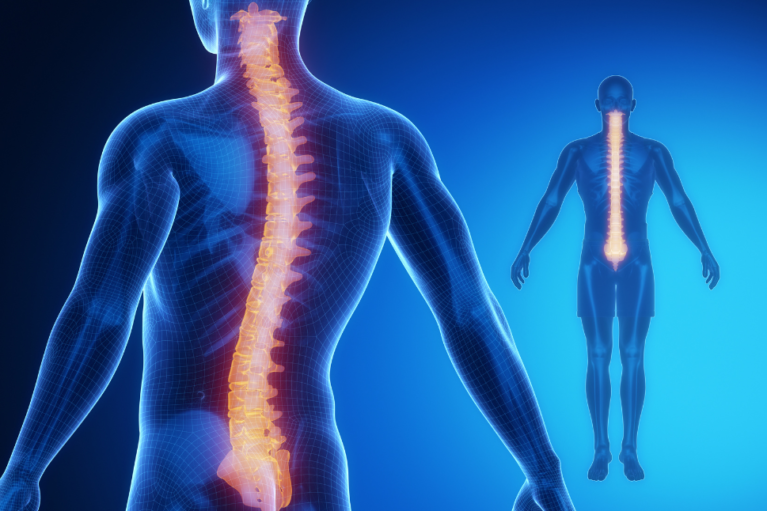
Neuromuscular Conditions
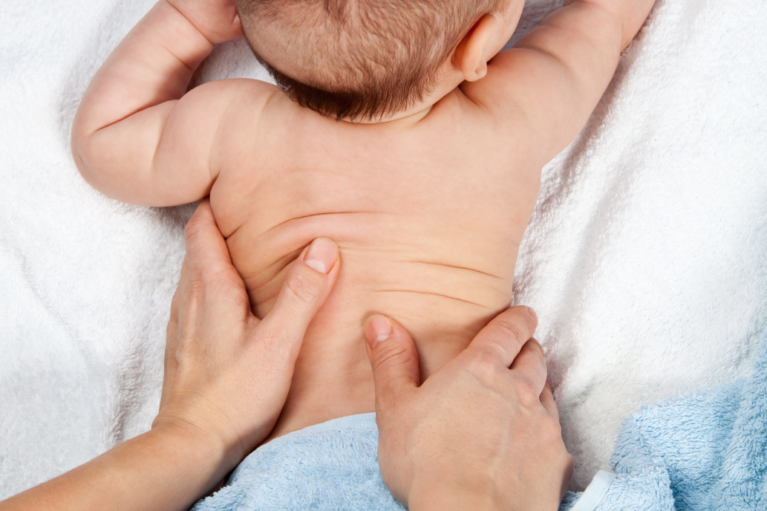
Congenital or Birth Defects
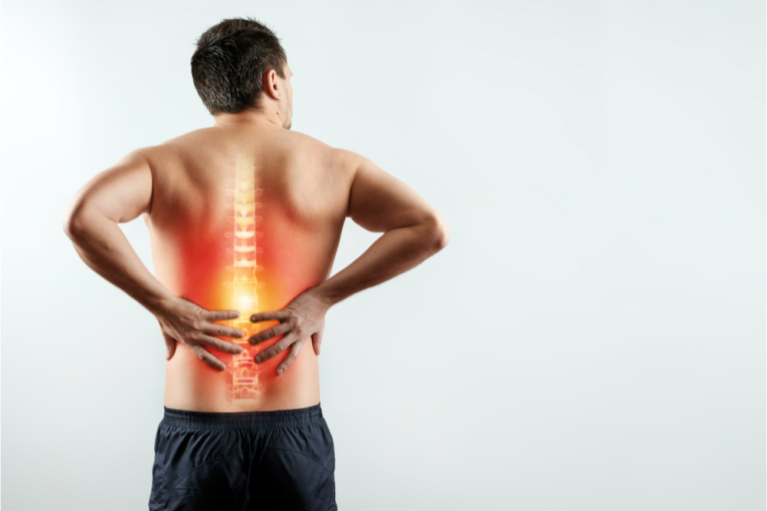
Spinal Injuries or Infections
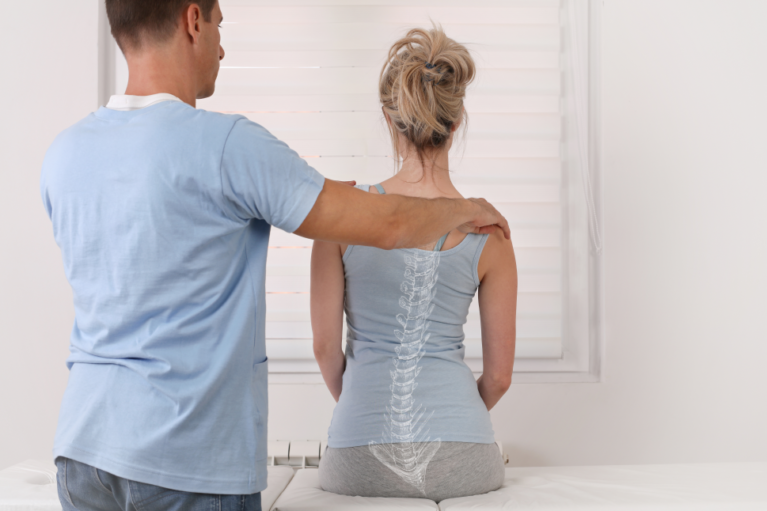
Spinal Cord Abnormalities
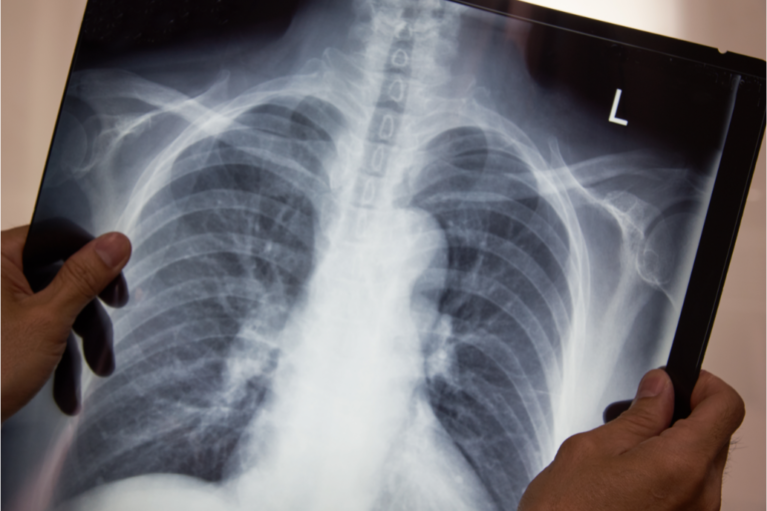
Early Chest Wall Surgery

Traumatic Accidents
With the hereditary version of scoliosis, many cases can remain undetected due to its mildness. However, the curve may worsen as the patient grows older. On the bright side, when caught early with chiropractic care, scoliosis can be managed or even reversed. Scoliosis chiropractors can help identify the condition, recommend care to relieve stress, and manually adjust the spine to decrease pressure.
How is Scoliosis Identified?
Early scoliosis detection is key to managing the condition. There can be several signs that may indicate the possibility of scoliosis. These symptoms include:
- Uneven shoulders
- One shoulder blade sticks out
- Head is not centered or aligned above pelvis
- Dimples, hairy patches, and skin color abnormalities over the spine
- Whole body favors or leans to one side
- One or both hips are raised higher
- One rib cage side juts forward
- One side of the back shows a lump when bending forward
One study found that 23% of patients diagnosed with idiopathic scoliosis experienced back pain and neck pain at the time of diagnosis. There are several ways that scoliosis may be diagnosed and confirmed. One can be diagnosed with a physical examination and an Adam’s position test, where the patient bends as far forward as possible at their waist while keeping their feet together. Bending forward reveals any asymmetry of the trunk or curvatures of the spine. Also called the Adam’s Forward Bend Test, this test is a standard screening sometimes used by pediatricians and grade schools. Scoliosis chiropractors may also use this screening method. The following radiographic tests provide more accurate scoliosis diagnosis and more specific details: X-ray, Spinal radiograph, Computed tomography or CT scan, Magnetic resonance imaging or MRI.
Scoliosis Treatment
When diagnosed early, scoliosis can be managed properly to prevent worsening of the spine curvature. It is always best to identify the condition during the individual’s childhood or adolescent years. If scoliosis goes unchecked, there can be long-term consequences. For instance, adult degenerative scoliosis has been linked to sciatica pain. Meanwhile, severe thoracic-dominant scoliosis is linked to diminished lung or heart function. The potential treatments can include consistent spinal realignments from a licensed scoliosis chiropractor. By combining spinal realignment from chiropractic care with muscle-strengthening exercises and stretches to support the new spinal alignment, scoliosis can be managed. Other common scoliosis treatment options are:
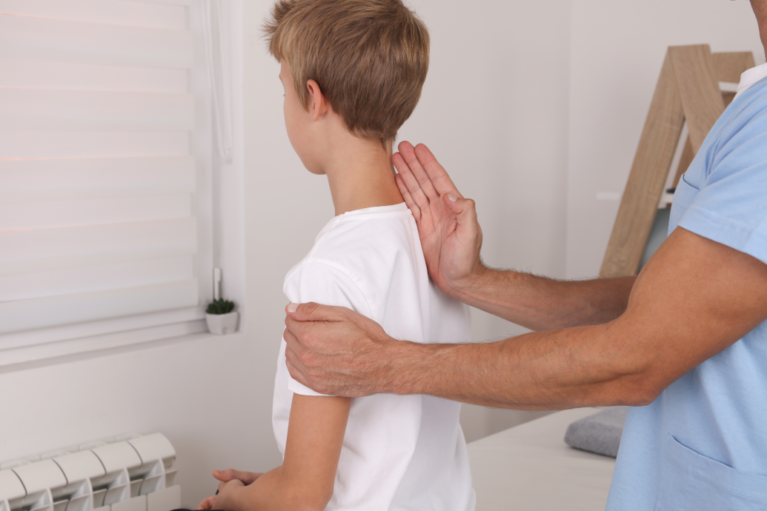
Observation
For mild cases, regular physical exams every few months or X-rays every five years may be enough. Regular chiropractic care is recommended as a treatment, especially for mild cases, while observing the progression.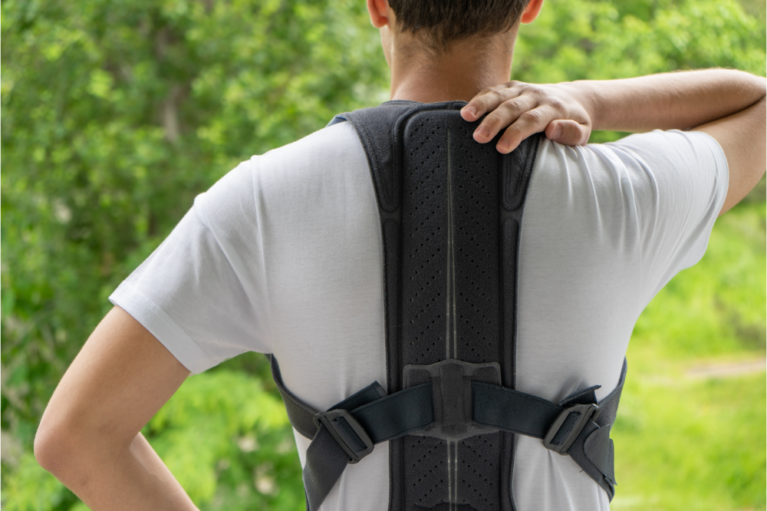
Spinal Braces
Bracing is only effective in children and adolescents who have yet to reach skeletal maturity. Spinal braces are often recommended as a treatment after regular chiropractic care as corrective treatment.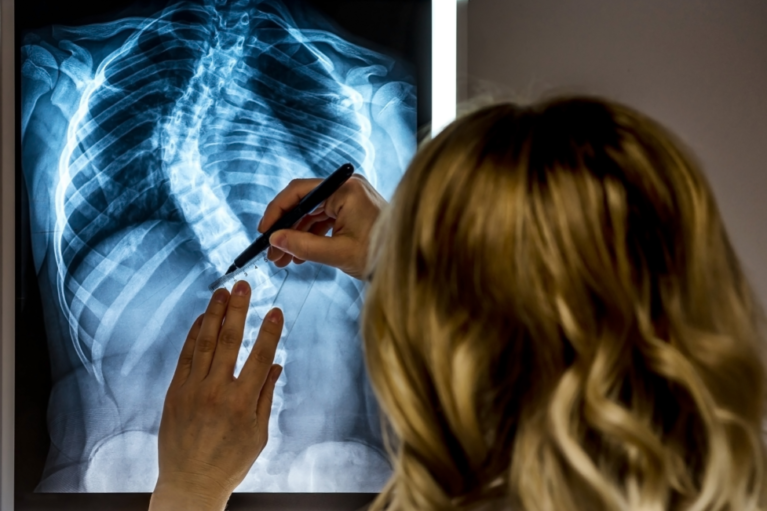
Surgery
Often only recommended for patients with a spinal curve greater than 50 degrees or is experiencing nerve damage. This may be recommended as a treatment after exhausting non-invasive treatment options.
Other factors that may determine or affect treatment options include:
- Spinal maturity or age of the patient
- Degree and severity of the spinal curve
- Location of the curve
- Likelihood of curve progression
In many cases, surgical treatment will not be necessary—not unless the condition is severe or worsens at an accelerated rate. The most appropriate scoliosis treatment would depend on several factors. Chief among these is the severity of the curve.
Scoliosis Chiropractors in Watkinsville & Athens
Chiropractic Works, serving Watkinsville, GA & Athens, GA, is a gentle, conservative, and non-invasive approach to treatment that can prevent, slow, and reverse the progression of scoliosis. A chiropractor will perform specific spinal adjustments to reverse the body’s curves and assist in the aligning process and can also help with tension associated with your body’s overcompensating. Our chiropractic practice in Watkinsville, GA is ready to help patients slow down and stop the progression of scoliosis. If you are looking for a safe, non-invasive approach to treating scoliosis, we have what you need. Call us today at (706) 548-8984 or request a call to discuss your needs and get started on your scoliosis treatment.
